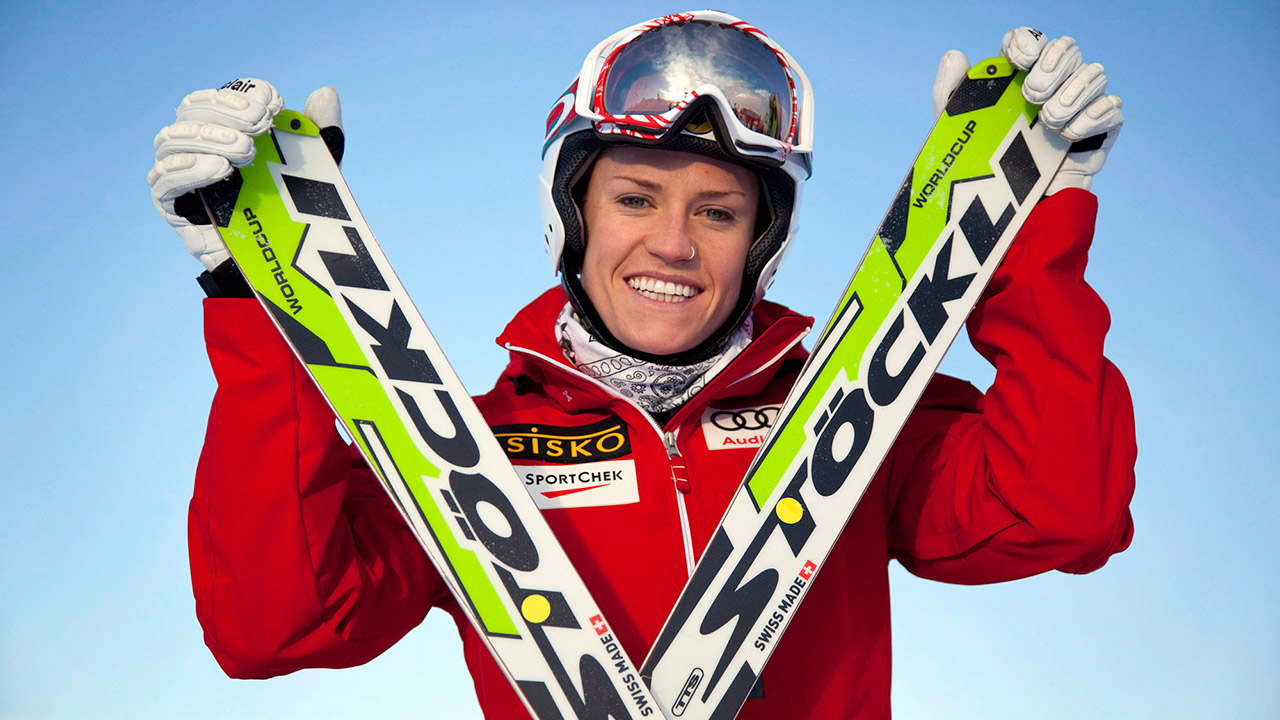When Georgia Simmerling crouches at the start of a ski race, and stares down the menacing track, she knows the memory of countless hours of training and racing is stored in her muscles. She knows her body will carry her. She knows she’s good at it.
When the 26-year-old walked into a cycling velodrome, however, she had to check her ego at the door.
Simmerling is gunning for a spot on Canada’s track cycling team for this summer’s Rio Olympics. If successful, it will be her third Olympics — in three different sports.
"A huge component of it is really just putting yourself out there, and just kind of expecting and understanding that your vulnerability levels are going to be so high, you’re going to feel so exposed," Simmerling said, of her latest sporting endeavour. "I remember even the first day, and the first week, it was like: ‘You’re terrible at this, no one knows who you are, and no one cares what you’ve done."’
Simmerling is following in the footsteps of such multisport athletes as six-time Olympian Clara Hughes. The Canadian Olympic Committee is hoping to unearth a few more.
The COC, in partnership with RBC and the CBC, launched RBC Training Ground on Monday, a series of regional workouts designed to help officials uncover athletes with Olympic potential, in sports athletes might not have considered.
Simmerling encourages more athletes to follow her lead.
"If you’ve fallen out of love with your sport… and if you still have that itch of competition in you, then for sure I would recommend looking at other sports and seeing what’s out there, and seeing what would best suit your body.
"I wasn’t about to try gymnastics or figure skating," she added, laughing. "That never would have worked."
The Vancouver native raced the Super G at the 2010 Vancouver Olympics, and in skicross at the Sochi Olympics four years later. She’s a five-time World Cup medallist in skicross, and was ranked No. 2 in the world.
Since she needed to cross-train in the summer, she first took up rowing, and trained with Canada’s women’s team. But when Rowing Canada ask that she train with them year-round, she wasn’t willing to give up the slopes.
She decided to hop on her bike instead, and when she shattered her wrist in seven places — it required two plates and 10 screws to fix — abruptly ending last winter’s skicross season, she got serious about cycling. Less than two weeks after surgery, she was working out on a stationary bike. She then called Craig Griffin, Canada’s endurance track cycling coach.
"I said ‘Hey, I want to make the national team,"’ Simmerling said. "He said ‘Call me again if you ride an individual pursuit in three minutes and 45 seconds.’ And I said ‘OK."’
Simmerling travelled to Los Angeles to train, and had made the time Griffin wanted in a week-and-a-half.
"I’m just a very goal-driven athlete, and I had an end… a big goal, and a big dream, and in order to achieve those big goals and big dreams, you need to break it down and see what you need to do tomorrow, and see what you need to do in the next month, and see the steps that you need to take in order to achieve that big goal," Simmerling said.
From that training in L.A., it was a hasty progression to the women’s national team. And at the final UCI World Cup event two weeks ago in Hong Kong, Simmerling, Jasmin Glaesser, Laura Brown and Stephanie Roorda defeated Great Britain for team pursuit gold.
"She’s a very, very high-level performer, but it’s a great example of where athletes with very high levels of athletic abilities and a willingness to try some new things can be successful," said Kurt Innes, the director of talent development for the Canadian Sport Institute Pacific in Victoria.
There are other examples. Kate O’Brien switched from bosled to track cycling, and won a gold and silver at last summer’s Pan Am Games. Andre De Grasse had dreams of playing in the NBA before he was spotted running in a high school track meet by coach Tony Sharpe. De Grasse has exploded into arguably the country’s biggest track star, racing to bronze in the 100 metres at last summer’s world track and field championships.
Top athletes have the physical gifts — the power and speed required for bobsled and track and field, for example. But they also already have the personality characteristics — the mental strength and motivation — of a high-performing athlete, Innes said.
"In order for us as a country to win, we’ve got to start collaborating and sharing all of these great examples of high-performance athletes, wherever they are and wherever they’re playing," Innes said. "That’s what this RBC program is trying to express: just come on in, have a go, demonstrate your current level of athletic abilities, and we will then help you find the sport that is the best fit for you."
The seven participating national sport organizations are cycling, rowing, women’s rugby sevens, athletics (sprints and jumps), canoe/kayak, speedskating and bobsled/skeleton.
Athletes between the ages of 14 and 25 can participate in one of four RBC Training Ground events — Feb. 20 in Vancouver, Feb. 27 in Montreal, March 5 in Toronto and March 12 in Halifax.
Up to 10 athletes from each event will receive resources such as funding and coaching, and the top performers earn a trip to the Rio Olympics to help fuel their Olympic passion.
Athletes can enter to qualify at RBCTrainingGround.ca.
While she’s had remarkable success in all three of her sports, crossing over to something unfamiliar was anything but easy for Simmerling.
"I just go back to the facts," said Simmerling, who intends to ski cross in hopes of an Olympic medal in Pyeongchang in 2016. "Whenever I’m kind of doubting myself, or there’s a moment of wavering confidence, I’ve told myself ‘You were a part of that team (that won gold in Hong Kong) and you are a part of this team now, you are a contributing member.’
"That’s what I need to go on to the next step. There are definitely a couple more big steps to make, but I think I’m on the right track."
Simmerling said the cycling team for Rio will be chosen in April.

